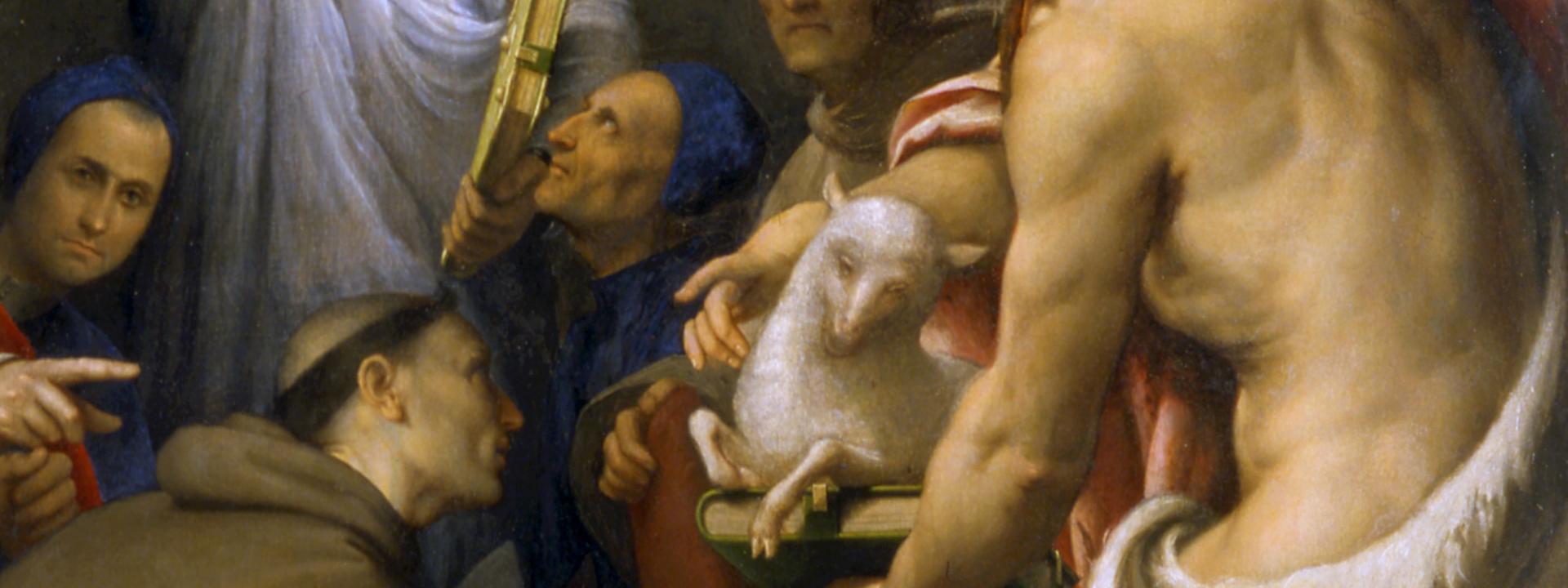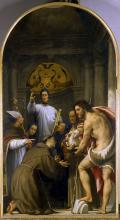The painting was executed for the Renier family altar in the left nave of the church of Madonna dell’Orto. On 14 May 1528, Federico Renier underwrote an agreement with the monks in which he promised to pay for a tomb, altar, and altarpiece dedicated to Lorenzo Giustiniani, to whom the family was devoted as Federico’s father, Alvise Renier, had affiliated himself with the Venetian congregation of the Augustinian Canons Regular of San Giorgio in Alga, founded by Lorenzo Giustiniani, to whom the church of Madonna dell’Orto had been entrusted. Pordenone was commissioned in 1532 by the secular canons of the Madonna dell’Orto monastery to undertake an altarpiece (most likely this one, as it is the only work by Pordenone registered in the church) to pay off an outstanding debt of 100 ducats the painter owed the Paduan lawyer Alvise Bardellino following his purchase of land in 1527. On his death, Bardellino had named the canons regular his sole heirs. We do not know exactly when the altarpiece was executed, but the fact that the 1533 altarpiece by Pomponio Amalteo in the Duomo of San Vito derives from Pordenone’s is at least indicative of the existence of a finished model at that time. The altarpiece had already been consigned in 1537 when Bardellini’s widow, donna Cassandra, filed a lawsuit against Pordenone and the canons regular to assert her right to her husband’s inheritance.
From the way the composition is articulated, the figures’ elongated forms, and the torsion of their bodies (especially in the case of the Michelangeloesque body of John the Baptist), it is clear that the artist was familiar with the post-Classical culture of central Italy.

